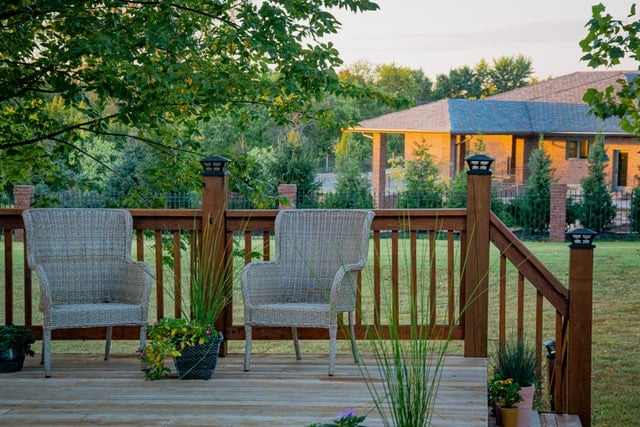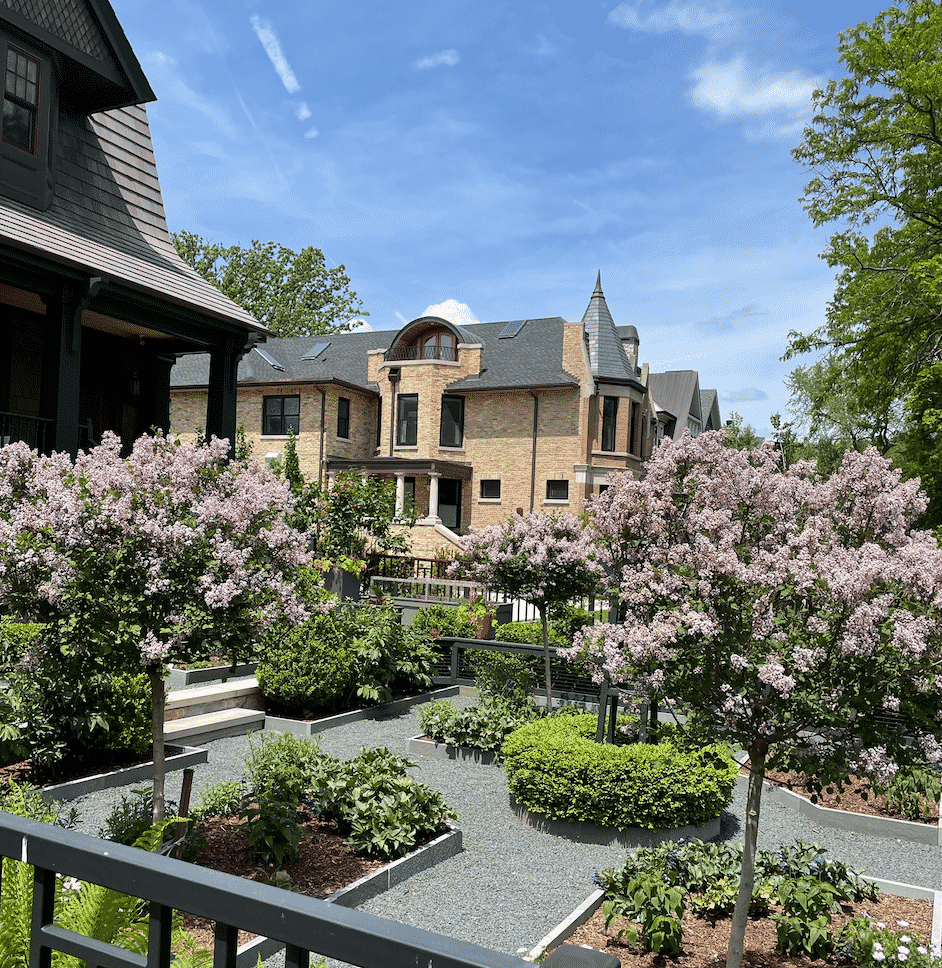
Imagine investing in an asset whose value grows steadily over time, only to discover 8-10 years later that its potential was flawed from the beginning.
This is what happens when the wrong tree is planted, or when healthy trees are planted on properties not suitable for them.
Choosing trees that are right for you and your property requires a little homework. The first step is being realistic about your goals and the performance of the trees you have in mind. We believe nearly every shade, ornamental, and evergreen tree has merit. Some will last for decades or more, becoming majestic pieces of living architecture that grace the property.
But don’t overlook the utility of their unassuming cousins. Some inexpensive trees provide desirable privacy in just a few years. The tradeoff may be a shorter lifespan. We’ll get into these details shortly, just remember that every tree will thrive if the cultural conditions are right for it.
There are different types of tree species, varieties, and cultivars. The latter two are essentially improved versions of the species. For example, Honeylocust cultivars will have improved shapes, but more importantly, they will not produce undesirable seed pods or thorns, thereby making them better for residential properties.
Before choosing any ornamental plantings, familiarize yourself with your property’s cultural conditions. This will help you avoid what you may love, but that will otherwise not thrive. The following are some factors to consider when you begin that process.
Cultural Conditions That Influence Survival and Growth
#1. Soil Quality – Soil quality is determined by hundreds of factors. The most important are organic matter and a suitable soil structure that permits the free exchange of air, water, and nutrients from the environment. Soil that has been compacted by construction or other traffic has been compromised. This may require replacing at least the top portion with fresh soil rich in organic matter.
#2. Natural Drainage – Most drainage is surface drainage that carries water to low points where it escapes the property naturally or with drainage systems. Subsurface drainage systems are often required in suburban areas to support the community’s master plan. Sometimes supplemental measures are necessary due to manipulation of the natural grade, such as with the installation of patios, walls, and other structures. Poor drainage prevents trees from getting the oxygen they need.
#3. Nearby Plantings – When trees are planted in beds with other ornamental plantings, there is often a beneficial symbiotic relationship. Their root systems work together to share essential elements and create the right environment for beneficial mycorrhizal fungi. In contrast, there are some plants, namely common turfgrass, with aggressive root systems that compete with trees for these essential elements.
#4. Prevailing Wind, Sun, and Rain – When homes and other buildings are involved, the effects can be favorable or detrimental. Structures can minimize harsh sun and winds, but they can also restrict natural rainfall. It’s necessary to remember that most trees thrive better in groupings where they can collectively adapt to the environment. Whereas, a single tree located in the center of a sunny turfgrass lawn is likely to face those tough conditions on its own.
#5. Micro-Conditions – Fences and mature trees create favorable microclimates by protecting smaller plants, including smaller ornamental trees, from environmental forces. Take the time to investigate these and the effects of nearby buildings. South-facing walls and windows can reflect a great deal of heat that challenges trees. In these situations, it’s better to choose trees that have more durable, waxier leaves, such as oaks and conifers.
#6. Care and Maintenance – You may care for your landscaping or hire professionals, but in either case, there is no substitute for being aware of changes throughout the seasons. For example, you may have an automated irrigation system that provides supplemental water, but it must be regulated based on how much rain is received. When you communicate your observations to the professionals that care for your landscaping, you help them achieve better outcomes.
The best conditions for trees to thrive are found in their native environment. When in doubt, try to emulate these conditions, and you will most likely meet with success.

Popular Minnesota Trees by Category
#1. Conifer Trees
Minnesotans love their conifers, especially in wintertime when they are adorned with layers of fresh snow.
- Black Hills Spruce – This low-maintenance conifer has a beautiful pyramidal shape that punctuates the sky. Groupings provide privacy and backdrops for landscape elements such as fire pits and water features.
- Colorado Spruce – Slower growing than the Black Hills Spruce, Colorado Spruce are also desired for their unique blue color.
- Balsam Fir – The softer needles of the balsam fir make it a better companion tree than spruce. It does require well-drained, moist soils, and is well-suited to our Minnesota climate.
#2. Deciduous Shade Trees
Shade trees cool our outdoor environments, but they offer much more. Stately oaks and maples develop into majestic specimens that are living architectural elements in a landscape. Their canopies define the vertical space to make deck and patio spaces intimate outdoor rooms.
- Red Maple – The Red Maple is a workhouse shade tree. It thrives in sun and shade and prefers rich, moist soils. In fact, it can tolerate periods of excessive moisture better than most trees.
- Chinquapin Oak – There are many oaks to choose from, but if you can find a Chinquapin Oak you have a unique shade tree. Unlike other oaks, it allows filtered sun to reach lower plantings beneath its canopy.
- Honeylocust – The go-to shade tree for light shade is the Honeylocust. Its leaves are comprised of small leaflets that allow sunlight to reach plants below, and that practically blow away when they drop in the fall, thereby minimizing fall clean-up.
#3. Ornamental Trees
Ornamental trees are sought after for their unique qualities. These may be showy spring flowers, persistent fruit that provides winter interest and attracts birds, and unique versions of plants we have come to love, such as tree-form lilac and hydrangea.
- Japanese Tree Lilac – Typically a multi-stem tree, the Japanese Tree Lilac, has an upright shape that makes it a good choice for tighter spaces. Its large, fragrant, creamy white flowers are quite showy in the springtime, typically blooming after most crabapples.
- White Birch – Visitors to Minnesota and other northern states are in awe of the beauty of the White Birch. There is nothing like it, except for the equally beautiful but more finicky Paper Birch.
- Prairifire Crabapple – Most crabapple trees are susceptible to apple scab and other diseases that take the joy out of their springtime show. Prairifire is a variety with stunning dark pink to magenta flowers that is highly resistant to those diseases.
- Floribunda Crabapple – Also known as Japanese Crabapple, this is the grand dame of crabapple trees. It may be hard to find Floribunda crabs, but they are worth seeking out if you want a flowering tree that will perform for decades. Allow plenty of space for its wandering horizontal branching that is beautiful even in the off-season.
- Tree form Lilac and Hydrangea – If you adore the fragrance and flower of lilacs and hydrangeas but want a more formal specimen, these are an excellent choice that will get noticed and talked about. See the photo above for a perfect example.
Architectural Landscape Design: Helping Homeowners Enjoy Better Living
Here at ALD, our top priority is creating living spaces that are right for you. Our landscape design team will work with you from concept to construction to create the right landscape for your personal needs. Contact us today for a free consultation to explore your next outdoor living project.
